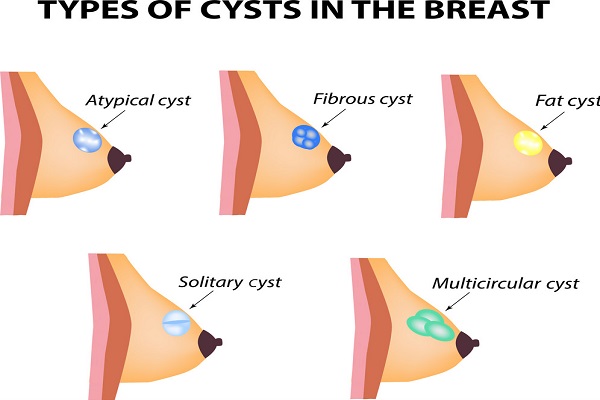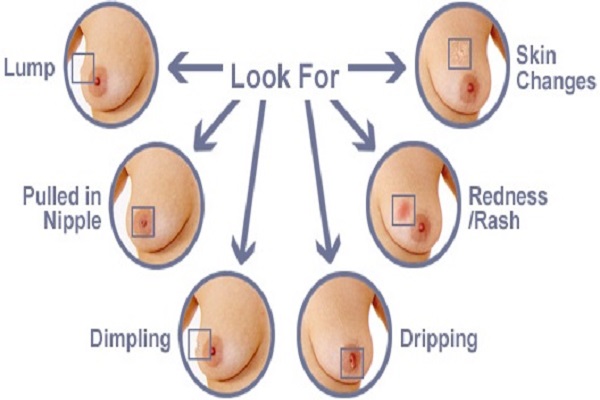If you find a lump in your breast, don’t panic. Eighty percent of all breast lumps are benign (non-cancerous). Often, testing—mammogram, ultrasound, magnetic resonance imaging (MRI), or biopsy (when a sample of the lump is removed and examined under a microscope)—is the only way to determine what a breast lump actually is.
If you are concerned about your breast cancer risk, we can meet with you to determine if you would benefit from genetic testing, additional preventive measures, or more intensive cancer screening.
One of the best ways to take charge of your risk factors is to keep up with recommended breast cancer screenings. To schedule a mammography screening, call Ms. Nguyễn Thị Lệ: (8428) 6280 3333, ext. 8402 or Ms. Võ Thị Mỹ Liên: (8428) 6280 3333, ext. 8424.
"I've found a lump in my breast."
Don't panic. Nearly eighty percent of all breast lumps are benign (non-cancerous). Benign breast lumps are usually moveable and smooth, and can often be found in both breasts. There are several common causes of benign breast lumps:
- Benign Breast Changes
- Breast infection or injury
- Medications that may cause lumps or breast pain, especially birth control pills, hormone replacement therapy, soy products, and caffeine
Breast tissue changes during a woman's entire life. Breast tissue is particularly sensitive to estrogen and progesterone hormone levels that often fluctuate during the menstrual cycle.
What are the types of benign breast conditions?
-
Fibrocystic changes
Changes in hormone balances during normal, monthly menstrual cycles can create, for some women, symptomatic breast changes that are referred to as fibrocystic changes. Cysts often are described as benign, tiny, fluid-filled sacs that may feel like lumps. Tenderness and lump size commonly increase the week before the menstrual period and lessen a week after. The lumps may be hard or rubbery and can appear as a single breast lump that may be large or small. Fibrocystic changes also can appear as thickening of the breast tissue. Fibrocystic changes can occur in one or both breasts and are the most common cause of benign breast lumps in women age 35 to 50. It is relatively uncommon for postmenopausal women to have symptomatic breast changes because of a lack of hormone stimulation of breast tissue.
-
Simple cysts
Simple cysts are benign fluid-filled sacs that usually occur in both breasts. They can be single or multiple and can vary in size. Tenderness and lump size often change with the woman's menstrual cycle. Cysts may also be affected by caffeine (coffee, tea, chocolate, energy drinks).
-
Fibroadenomas
Fibroadenomas are the most common benign solid tumors found in the female breast. They are round, rubbery, slippery lumps that move freely in the breast when pushed. They form as the result of excess formation of lobules (milk-producing glands) and stroma (connective tissue in the breast). Fibroadenomas are usually painless. They occur most often between the ages of 20 and 40 and are more common in African-American women.
-
Intraductal papillomas
These are small, wart-like growths in the lining of the mammary duct near the nipple. They usually affect women 40 to 50 years of age and can produce bleeding from the nipple or nipple discharge.
-
Traumatic fat necrosis
This condition occurs when there is trauma (sudden injury) or surgery to the breast. This causes fat to form in lumps. The lumps are usually round, firm, hard, single, painless and in the area of a surgical scar.

Can men have breast lumps?
Yes, adolescent boys and men can have tender breast enlargement, often with a lump beneath the nipple. Sometimes this is in one breast, often in both. This benign finding is called gynecomastia. Gynecomastia also can occur after taking certain types of medications.
Can a breast lump indicate an infection?
Possibly. Sometimes breast infections are first noticed as a painful lump, with or without redness. Mastitis is an infection that often occurs in women who are breastfeeding. Mastitis is caused by bacteria that enter the mammary ducts through the nipple. Localized pockets of infection will appear as tender, warm reddened areas in the breast.
Breast self-exam
By performing monthly breast self-exams, you can become familiar with the normal monthly changes in your breasts. Breast self-examination should be performed at the same time each month, 3 to 5 days after your menstrual period ends. If you have stopped menstruating, perform the exam on the same day of each month.

What should I do if I find a lump in my breast?
During a breast self-exam, you may notice lumps or a change in the texture of your breast. See your health care provider if you discover any new breast changes, changes that persist after your menstrual cycle, or changes that concern you. Conditions that should be checked by a health care provider include:
An area that is distinctly different from any other area on either breast
- A lump or thickening in or near the breast, or in the underarm that persists through the menstrual cycle
- A change in the size, shape, or contour of the breast
- A mass or lump that may feel as small as a pea
- A marble-like area under the skin
- A change in the feel or appearance of the skin (dimpled, puckered, scaly or reddened area, thickened with orange peel appearance on the breast
- A change in the appearance of the nipple [inverted, creased, scaly, or reddened)
- Spontaneous bloody or clear fluid discharge from the nipples
While this can make you worry, it's important to understand that most breast lumps are not cancerous. A lump may be malignant (cancerous) or precancerous, but there are several types of breast lumps that are benign (non-cancerous). To complicate matters, many benign breast changes can mimic breast cancer.
Breast lumps can vary in size, rate of growth, and symptoms. It is practically impossible to distinguish the cause of a lump based on a breast exam, so you should be sure to see your doctor when you first notice one.
Often, testing—mammogram, ultrasound, magnetic resonance imaging (MRI), or biopsy (when a sample of the lump is removed and examined under a microscope)—is the only way to determine what a breast lump actually is. Keep in mind that even if you have breast cancer, the disease is treatable, especially when found early.
Your Disease Risk
Physicians and researchers at City International Hospital have developed risk assessment tools for many different diseases and forms of cancer.
| Breast Cancer Screening Package at CIH | ||
Tests included |
WomenAge </= 40 |
WomenAge > 40 |
| Medical consultation | ||
| Comprehensive medical history & physical examinations | |
|
| Specialist consultation | |
|
| Diagnostic Imaging | ||
| Breast Ultrasound | |
|
| Mammography/ or Breast MRI | |
|
| Total cost of the individual tests (VND) | 820,000 | 1,660,000 |
| Package Price (VND) | 700,000 | 1,320,000 |
Check out our different Screening Packages for different needs
For appointment or further service consultation, please contact:
- Ms. Võ Thị Mỹ Liên: (8428) 6280 3333, ext. 8424
- Ms. Nguyễn Thị Lệ: (8428) 6280 3333, ext. 8402
For any further information about medical services provided by City International Hospital, please contact:
- Operator: (8428) 6280 3333, ext. 0
- Address: Level 3, No. 3, 17A Street, Binh Tri Dong B Ward, Binh Tan Dist. (Next to AEON Mall Binh Tan). Ho Chi Minh City.
- Website: https://cih.com.vn/en/
- FB page: https://www.facebook.com/BenhVienQuocTeCity










